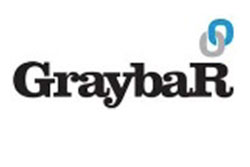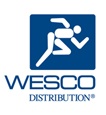Q2 2021 Earnings: AD, Graybar, Rexel, WESCO

The past few weeks have been Q2 earnings reports from publicly held distributors. And records should be expected for Q2 since it is being compared to Q2 2020 … the height of COVID from a business disruption viewpoint. (the comparables are easy!)
Since I was out on vacation for some of the initial ones, I decided to group them together (so, it may be a little long) but it provides the opportunity to look for trends.
In no order

AD
AD reported that they were up 30%, however, from an electrical information viewpoint, the report is uninformative as they do not break down the information by vertical market. Same store sales were up 17%, however, again, this is across 13 vertical markets and three countries.

Graybar
Graybar reported record Q2 results of $2.2 billion. The company was up 26.6%. The first half of the year they are up 16.9% to $4.1 billion.
Some insights from their 10-Q,
- Their customer mix changed slightly with Construction increased to 58.4%, CIG (Institutions / Government down to 25.8%) and Industrial / Utility up to 15.8%.
- Gross margin dollars increased 26.9% (slightly outpacing sales growth) with gross margin remaining at 18.9% for Q2. Price inflation contributed to higher net sales and higher gross margin dollars.
- SG&A decreased from 14.8% in 2020 to 13.3% in 2021. The dollar amount was higher than 2021 due to higher compensation, benefits and rehires vs Q2 2020. (price inflation also impacts this.)
- Some may remember that Cape Electric, a division of Graybar, acquired Richmond Electrical Supply during Q2. In the 10_Q Graybar mentions that “net cash used by investing activities totaled $23.5 million.” The increase was due to “higher capital expenditures and the acquisition of the business.” (for clarity – the entire $23.5 million was not for Richmond Electric.)
Overall, a strong quarter for Graybar and interesting, don’t know if intentional, an outcome of reduced PPE purchases from government or just the natural flow of business, that the company increased sales in the industrial market (Shingle & Gibb acquisition?) and reduced in CIG. If so, the Shingle & Gibb acquisition could be an indicator of future Graybar acquisition activity (and when did you ever think that Graybar would make two acquisitions within six months?)

Rexel
- 32.3% for the quarter and 9.6% vs Q2 2019
- cable pricing contributed 6.5% and non-cable products contributed 4.2%, solely from pricing
- US “still 15% below pre-crises levels”
From Rexel’s press release, focused solely on North America:
- US sales up 28.1% to $933.3M, down 0.8% vs 2019
- Helped “robust demand in proximity and favorable
price increases.”
- Seeing more success in renovation work than new construction.
- “lower sales decline in project business, despite greater selectivity.”
- 4 regions above pre-crises levels (Northeast,
Mountain Plains, California and Florida)
- Regional performance ranged from -22% to +29% versus 2019
- Down regions (Southeast, Northeast, Midwest and Gulf Coast) attributed to exposure to project business, heavy industry and oil / gas.
- Helped “robust demand in proximity and favorable
price increases.”
- Canada sales up 34.6% to $309.4M, up 5.3% vs 2019 (but they also have the acquisition of WESCO’s utility and datacom business.)
- North America is up 14.8% for the first half
- eCommerce / digital sales were up 9% in North America
- North America gross margin up to 24.8%
Additional notes from earnings call related to North America
- Company has reduced its debt net ratio to 1.76 and expects to be close to 1.5 by the end of the year. Given this it is starting to consider a renewed global acquisition strategy.
- Adjusted EBITDA in North America is 6.1% due
to improved margins
- 4 US regions have an EBITDA above European profitability average
- Expect increase in supplier rebates linked to “exceptional growth in sales”
- Patrick Berard, the outgoing CEO reiterated “this is a people business.”
- When asked what the biggest risk to the company longer term is, Berard responded “We need to work closer with certain suppliers and suppliers recognizing that we can be away from them, not just to sell products, but to sell software, patches and renovation. In the business model, the value of the distributor could be broader with the same suppliers or additional ones if need be in order to be in the product, software and management of configuration and solutions. The risk is to be too slow.” This indicates that distributors need to think broader about the business that they are in. This can be accomplished regardless of size. The differentiator is what areas to get involved in.
- Project backlog is high.
- More regularly saying “no” to business if not profitable opportunity.
- Regarding raw material shortages, shares input that plastics will be “long term”, electronics will be a minimum of 18 months, metals will be longer-term due to the time to increase supply.
- Rexel is not sharing customer level information with suppliers. Will share aggregated information about mix and trends. (although, this probably changes with some key suppliers – i.e., Rockwell in the US.) Have segmented customers into 27 groupings.
Overall, Rexel appears to be doing well in the US, although it changes significantly by region.

WESCO
When I first received the WESCO earnings transcript, I knew it would be an “interesting” read when one of the headline bullets referenced revenue being up 120.24%. The challenge is Q2 is the lapping of the Anixter acquisition. Plus the Anixter acquisition significantly diversified WESCO making US electrical comparisons “a challenge”.
Some insights from WESCO’s Q2 earnings call, with a focus on their ESS (Electrical) group and the presentation:
- Company, overall, is 4% above 2019 Q2 sales
- Compared with prior year, sales were up 24% with currency adding 3% and pricing 4% (Interesting that Rexel had greater benefit from pricing, probably due to WESCO having more contracts due to the industrial MRO and utility business and hence less opportunity to pass along costs to these customers. This would also reduce sales revenue potential.)
- Backlog up 36% versus prior year and up 17% vs Q1 (to be expected as most distributors are experiencing this due to supply chain issues.)
- Gross profit was 19.6%. Gross margin up to 21% with one-time benefits. While up 140 basis points, 110 points was due to a focus on improving margin and pricing issues. The other 30 basis points was “one-time” benefits, inclusive of supplier rebate true-ups.
- State “ensuring continuity of supply to customers” (which, only way to do that is liberal substitutions as so many manufacturers are having supply chain issues that it is almost impossible to meet all demand also, Rexel noted supply chain issues and stated that it is actively offering substitutions of different manufacturers and different product alternatives wherever possible).
- EES (electrical) was up 34%. Sales were up due
to:
- Construction sales
- Cross-selling initiatives
- Demand generation initiatives
- Increased in industrial and OEM business
- EES backlog up 15%
- Electrical EBITDA was reportedly 8.7% (includes synergies and other “stuff”) but the Q2 Pro Forma was 5.8%! Reportedly due to gross margin initiatives, passing through price increases and operational synergies realized. Overall Q2 EBITDA was 5.7%.
- Elements of margin improvement program (in
slides)
- Capability Building
- Sales Processes and Playbook (Value-based pricing and solution selling, sales training.)
- Performance Management (Accountability and Incentives)
- Systems and Dashboards (Dashboards / Analytics, Metrics and tools)
- Well positioned to take advantage of the
proposed infrastructure bill and other secular trends (WESCO defines six they
are pursuing):
- Electrification with a focus on EV market
- Automation and IoT
- Green Energy & Grid Modernization
- The utility group can benefit from grid hardening. WESCO mentioned that 60% of US distribution lines have surpassed their 50-year life expectancy.
- 24/7 Connectivity and Security
- Rural broadband. Emphasized that 30 million people today don’t have access to broadband. This is a major focus in the infrastructure bill. Between an FCC initiative called Rural Digital Opportunity Fund and the infrastructure bill there appears to be $85 billion in funding available to be spent over the next 10 years.
- Supply Chain consolidation and relocation to North America (manufacturer re-shoring)
- Digitalization
- For full year 2021, corporate-wide is expecting sales growth of 10-13% with EES on the high end of this range. Feels the market will be up 9-10% overall so projecting slight outperform overall.
Insight from analyst questions:
- Reportedly have increased inventories, presumably in the RDCs (perhaps manufacturers can comment, anonymously, if they have seen WESCO adding to their inventory.)
- Commented that suppliers have pushed an 8%, on average, price increase in Q2 and WESCO pushed through 4% of it. The difference is suppliers holding pricing for projects, supporting WESCO with SPAs and WESCO not realizing some of it yet due to backlog / projects. (Assuming all true, others should be experiencing the same as is similar industry dynamics for all.)
- WESCO is undergoing debt de-leveraging at a greater pace than they expected. (Given that, and it’s probably early, WESCO may be starting to think of M&A again. Given its new-found diversity, the question becomes, “where to consider acquisitions?” Should it be electrical? Should it be industrial supplies to support its integrated supply model and leverage industrial accounts? Should it be into the renewables field or industrial software? Lots of potential.)
- Part of WESCO’s margin improvement story is “training” their salespeople on value-based selling to optimize margin opportunities as well as being more proactive on soliciting SPAs (perhaps some manufacturers can confirm this. It also reaffirms that others need to make sure that they are optimizing SPAs as a sales and margin tool.)
So, what does it all mean?
Everyone had impressive numbers, around 30%, however, when thinking of what this compares against, is it meaningful? Very questionable.
- For example, WESCO Q2 2020 results, which were “muddied” given the timing of the Anixter acquisition, had them down 21%.
- Rexel globally was down 10.6% with US down 22.8%.
- Graybar was down 9.5% for Q2 2020 and 5.1% for the first half of 2020 (they had a good Q1).
Given this performance from a year ago and the impact of price inflation on every product category, the performance looks impressive but everyone is probably unpacking the numbers differently.
Bottomline
To “keep up with the Joneses” need to be up about 30%. If your in the construction space, expect 12-15% of that to be price increases. In “raw” numbers you should be up a little from 2019. To really determine if you are having success, look at unit counts for key SKUs, from a historical basis.
And in the end, does it make much of a difference. The key is gross and net profit and understanding truly what your share is.
But do know, the rate of increase will decline unless you have specific strategies to uncover markets and take share.




















